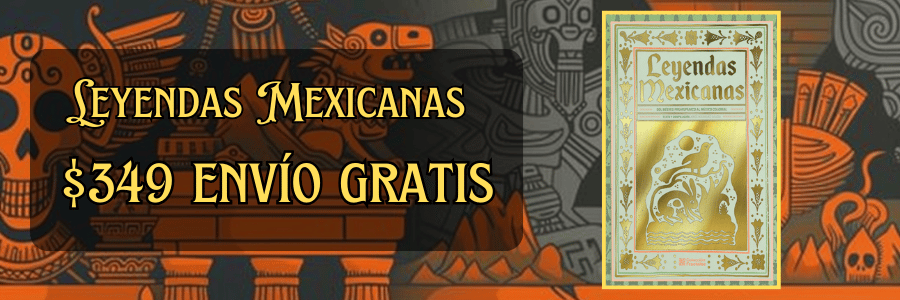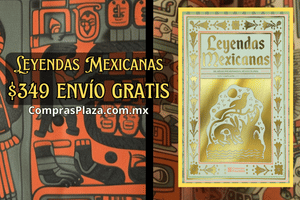The Influence of Maya Culture on Modern Mesoamerican Societies
The Maya civilization, which flourished in Mesoamerica from around 2000 BC to the arrival of Spanish colonizers in the 16th century, left a profound legacy that continues to be felt in modern Mesoamerican societies. The influence of Maya culture extends across various dimensions, including language, religion, art, agriculture, and social organization. In exploring the impact of Maya culture on contemporary societies such as Guatemala, Belize, Honduras, and Southern Mexico, it is crucial to acknowledge both the continuity and change that have occurred through centuries of history, colonization, and globalization.
Language serves as a significant marker of cultural identity, and the languages spoken by the Maya peoples are no exception. Today, more than six million people in Mesoamerica speak a variety of Maya languages, such as K'iche', Q'eqchi', and Yucatec Maya. These languages are not merely tools for communication but also vessels that carry the historical narratives, traditions, and worldview of Maya culture. In educational institutions and in political contexts, there has been a resurgence of interest in preserving and revitalizing these languages. Some countries in the region have even incorporated indigenous languages into their educational systems, enabling students to learn in their native dialects. This revival reflects a broader movement among indigenous peoples to reclaim their cultural identities and challenges the dominance of colonial languages.
Beyond language, beliefs and religious practices originating from Maya civilization still resonate in contemporary society. While many modern Mesoamericans identify as Christians, particularly in predominantly Catholic Guatemala, numerous pre-Columbian rituals and beliefs have been syncretized with Christian practices. Elements of traditional Maya spirituality, including ancestor veneration and the importance of natural elements, such as corn and water, are often woven into contemporary religious observances. Festivals that celebrate the harvest or honor deities mirror ancient practices, showcasing a resilience and adaptability concerning indigenous spirituality. This blending of old and new demonstrates the enduring nature of Maya cosmology and its capacity to coexist with imposed religions.
The significance of corn in the Maya worldview cannot be overstated, as it is central to their dietary practices, spiritual beliefs, and overall social structure. Corn is not just a staple food; it is considered sacred. In modern Guatemalan society, for example, the Maize God continues to be venerated, and agricultural practices often adhere to ancient techniques such as crop rotation and traditional milpas (swidden agriculture). While modern agricultural technology has been introduced, many rural communities still rely on traditional farming methods that reflect their ancestral knowledge of environmental stewardship. This connection to the land, rooted in Maya traditions, shapes local economies and food security, underscoring the role of agriculture in sustaining cultural practices.
Art and artistry are other dimensions where the influence of Maya culture is profoundly significant, particularly in the realm of ceramics, textiles, and mural painting. Traditional crafts continue to thrive in modern Mesoamerican societies, drawing on techniques and motifs that date back to ancient times. Guatemalan textiles, for instance, are known for their intricate patterns, techniques, and colors linked to distinct Maya ethnic groups. Each piece carries significant cultural connotations that reflect the identity of its maker and the community it represents. The vibrancy and popularity of these artworks not only serve as a means of cultural expression but also as an economic resource for many indigenous artisans, promoting cultural pride while supporting sustainable livelihoods.
Music, dance, and ritual performances also draw heavily from Maya traditions, serving as a living testament to the civilization's contribution to modern cultural expression. Festivals, fairs, and community celebrations often feature traditional music played by local marimba bands or groups utilizing wind and percussion instruments akin to those used in ancient ceremonies. These musical forms often incorporate themes from Maya mythology and folklore, bridging past and present through the medium of art. Dance, too, serves as a powerful vehicle for cultural transmission, acting as a means to celebrate identity and foster community cohesion.
Architectural influences stemming from pre-Columbian Maya cities can also be observed in modern Mesoamerican architecture. The ceremonial centers, pyramids, and temples that once dominated the landscape of the ancient Maya are echoed in contemporary Latin American architecture, where elements of Maya design and technique can still be seen. Although modern urban landscapes often reflect a blend of indigenous and European styles, the importance of sacred space and the hierarchical organization found in Maya city planning continue to resonate with the spiritual and cultural sensibilities of contemporary communities. An example can be found in the construction of new buildings and community centers designed to honor traditional architectural principles, emphasizing harmony with the environment.
Social organization and governance practices in modern Mesoamerican communities also bear the fingerprints of ancient Maya civilization. The Maya engaged in complex forms of governance that involved both local leaders and city-states. In many indigenous communities today, there remains a preference for democratic decision-making grounded in communal consensus, a traceable thread to pre-Columbian political structures. Some indigenous groups have formed councils or assemblies to address local issues, reinforcing a collective approach to governance that honors the legacy of their ancestors. Despite external pressures from national governments, these communities advocate for autonomy and land rights, echoing historical struggles that date back centuries.
The concept of time and the calendar system devised by the ancient Maya is another area where enduring influence is notable. The Maya possessed an advanced understanding of astronomy and timekeeping, developing a series of interconnected calendars. This calendrical system is still revered in many contemporary Maya communities, where spiritual practices are tied to calendar cycles. Understanding time as a cyclical event rather than linear has meaning in agricultural cycles, community rituals, and life events. The modern resurgence of interest in the Maya calendar signifies a reclaiming of indigenous heritage, showcasing the dynamics of cultural continuity and transformation.
Culinary traditions, too, have roots in ancient Maya civilization. Many modern Mesoamerican dishes feature ingredients cultivated and utilized by the Maya thousands of years ago. Staples such as corn, beans, and chili continue to form the backbone of traditional diets, while preparations and cooking methods have been passed down through generations. Modern cuisine often incorporates traditional recipes, presenting a fusion of indigenous practices with contemporary influences. By honoring their culinary heritage, Mesoamericans actively participate in the maintenance of cultural identity while navigating the complexities of globalization.
The impact of the Maya identity cannot be separated from the social and political movements seeking the rights and recognition of indigenous peoples. In countries such as Guatemala, where indigenous populations comprise a significant portion of the population, struggles for equality, land rights, and political representation are ongoing. The historical marginalization of indigenous communities faces resistance as movements unite under the banner of Maya identity, advocating for cultural preservation, social justice, and political engagement. This resurgence has led to the formation of organizations and networks that amplify the voices of indigenous peoples, drawing on the historical legacy of the Mayan civilization as a source of inspiration and strength.
While the influence of ancient Maya culture on modern Mesoamerican societies is multifaceted, it is essential to recognize the challenges that contemporary indigenous communities face. Issues such as poverty, discrimination, and cultural erasure persist, posing significant obstacles to the preservation of Maya identities and traditions. The globalization of culture further complicates the landscape, as market forces challenge traditional ways of life and erode cultural practices. However, amid these challenges, there exists profound resilience and the determination to assert indigenous identities, integrating past and present and fostering a future that honors ancestral legacies.
In conclusion, Maya culture continues to permeate the fabric of modern Mesoamerican societies through language, religion, arts, agriculture, social structures, and governance. The ongoing influence of ancient Maya civilization underscores the importance of cultural continuity and resilience, demonstrating how traditions are preserved, adapted, and celebrated in contemporary life. By recognizing and honoring this complex heritage, modern Mesoamericans not only enrich their own identities but also contribute to a broader understanding of humanity's shared history. As the world progresses, the legacy of the Maya civilization remains a vital component for articulating a future that recognizes the value of indigenous knowledge, culture, and ways of being in a rapidly changing world.
Explore More:
| How the Mexican Revolution Changed the Role of the Catholic Church |
| Education and Schools in Colonial Mexico |
| Women’s Rights in Mexico: Progress and Struggles After the Revolution |
| How the French Invasion of Mexico Impacted the Mexican Monarchy |
| The Artistic Legacy of Mexico’s Colonial Period: From Paintings to Sculpture |
| The Role of Oil in the Development of Alternative Fuels |
| How Mexican Artists Are Reimagining Their Cultural Roots |
| The Artistic Expression of Mexico’s Indigenous Communities |
| The Role of the Chichimeca in the Silver Mining Boom of Zacatecas |
| The Diplomacy of the French Intervention: Letters and Treaties |



